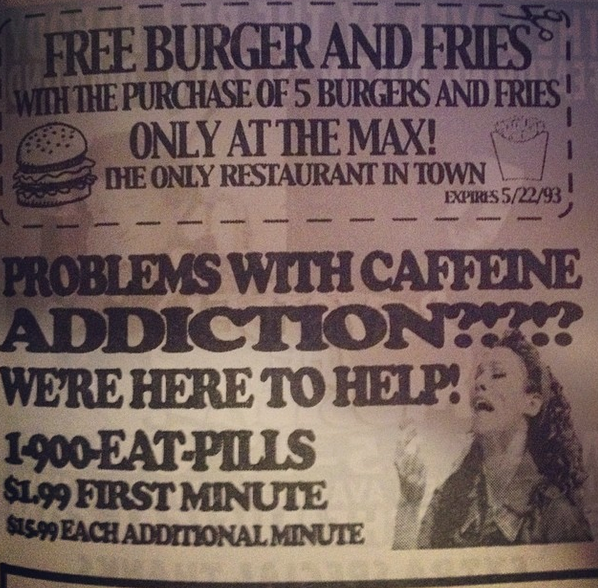
The adjective people have always used to describe me is prolific.
It makes sense. As author, blogger, public speaker, video producer, consultant, columnist, strategist, storyteller, filmmaker, publisher, musician and songwriter, I’ve spent the better part of my life as a collector, creator and communicator of ideas.
And so, in the past year, I’ve been researching and writing and experimenting extensively on this topic. I’ve also been reverse engineering my own creative process, cobbling together the world’s first comprehensive framework for becoming prolific.
It’s the art and science of collecting, creating and communicating your ideas.
Imagine The Artist’s Way meets Getting Things Done meets Behind the Music. That’s the best way to describe it. The goal is to change the way you think about the way you think. But it’s more than just a collection of exercises; it’s a rubric for operable behaviors at all stages and levels of the creative process.
My hope is that it will help you:
*Eliminate creative blocks for life with daily routines, rituals, postures and disciplines.
*Create rigor around your intellectual property and knowledge management.
*Tighten up your systems with infrastructure to produce high levels of output
*Fully flesh out your thoughts and messages for maximum impact.
*Strategically publish and position your body of work as a crafter of compelling content.
*Build a personalized content management system for collecting, creating and communicating your thoughts.
The system I’ve built will eventually become a book, a curriculum and some kind of software application. For now, I wanted to share a glossary of terms to help you rewrite your creative vocabulary. Each definition has a link to a related piece that explains it further. Enjoy.
Active listening. Tuning
into the muse and the situation and the gleams of light that flash across your
mind, trusting what the world is trying to tell you.
Arbitrary sorting
mechanism. An organizing principle, free of judgment and expectation, which
allows you to notice patterns in your ideas and inspiration.
Associative trigger. Personal
patterns and physical
objects, from music to visual stimulation to desk style, that echo the habits
of action and allow you to enter into your creative zone.
Awareness plan. A
metacognitive procedure or mental recipe for perceiving and thinking about the
environment around you, a lens for interacting with the world.
Cognitive richness.
The sense of agency and competence you experience during the process of manual
or analog work.
Commitment device. A
physical object or prototype that makes the effects of your work real and
visible for all to see, even in the early stages of production.
Constant. Muscles
to count on, places to return to, rituals to abide by, people to confide in,
rocks to anchor to, practices to rely on, structures to lean against, that keep
your creative life stable and fruitful.
Creative kindling. A
source of inspiration that reignites your original enthusiasm and the impulse that
initially fueled your artistic energy reserve.
Creative limbo. A
lack of excitement around not having discovering something worth doing, a
knowledge that you’re on the verge of a fiery new artistic pursuit, but an
inability to turn yourself over to some pressing, meaningful creative demand.
Creative on ramp. A
ritual that prompts a work mindset, a moment that merges you into the creative
process, an environment that sets a tone that says work happens here.
Creative subroutine.
Using a ritual that brings up your energy and snaps you into the appropriate
state of mind to do your work.
Discipline
transplant. Doable, less threatening strategies to enable your ideal mental, emotional and existential space
from which to create.
Distributed
cognition. New ideas that arise from combining many disparate pieces of
information or concepts over an extended period of time.
Ember of initiative.
Instead of taking things personally, you channel them productively, using
emotion as oxygen for your creative fire.
Faithful force. Routines
that keep your creative life stable and fruitful when circumstances get a
little too overwhelming.
Fragmentary
associative process. Creating ideas in a piecemeal, nonlinear fashion,
without the constraints of chronology, sequence, rational order and narrative.
Going perpendicular.
Intentionally walking away from your current work to engage in something
unrelated to the flow of activity.
Gradualistic
creativity. Rejecting the notion of the elusive eureka moment and
practicing an existential andholisticapproach to a creative life, living your life in a way that your art gets done over and over.
Gravitational order. Using motion to create equilibrium so your work finds its place in the universe,
thus conspiring towards some unifying geometrical situation.
Ground zero. The
entry point into the creative processing workflow, the primary location for
offloading raw materials into your idea factory.
Hyperfocused
expression. Whatever little world you investigate to a great, high level,
something that fascinates and ignites you.
Limitation leverage. Identifying your deficiency,
deciding how to exploit it and then restructuring everything in the creative
process around it.
Medium agnostic. Instead of forcing our own
expectations upon the work, you allow patterns to emerge and open our work to
becoming more dimensionalized, in whatever form it needs to live.
Module. Treating each thought as an
uncategorized chunk of creative material, an objective, portable piece content
that accumulates and categorizes into its own structure.
Moment of conception.
The single spark of life that signals an idea’s movement value, almost
screaming to you, something wants to be built here.
Movement value.
The discipline of recognizing conceptual beginnings, witnessing ideas in their
nascent state and spawning as many creative offspring as possible.
Natural
collaboration. Creating
a more visceral and spontaneous contact with your work by designing systems
and structures that invite nature as your collaborator.
Organizing principle.
The core assumption, central reference point or guiding pole, which governs
action and allows everything else in its proximity to derive value.
Physical
displacement. A problem solving technique whereby working in
unusual settings helps you see patterns you wouldn’t have noticed otherwise.
Polyamorous creation. Pursuing relationships with multiple
creative projects, with a full
knowledge and consent of all partners involved.
Primary creative
environments. The
essential environment asset that reflects who you are and what’s important to
you, so that the ideas flow as a natural consequence of that workspace.
Portable creative
environments. Any alternative workspace that functions as a transportable lightning
rod, tailor made to your artistic tendencies, which enables you to snap into
work mode and make the word flesh.
Premature cognitive
commitment. When
people become emotionally or intellectually bound to a course of action,
a form of mindlessness that results after a single exposure to an idea.
Proactive
unconscious. Viewing your mind as idea processor, waiting at your beck and
call, begging you to assign it a problem so it can immediately go to work for
you.
Prolificacy equation.
An incrementalist, easy does it approach to creating a body of work, which
is everything you create and contribute and affect and impact.
Prototype. Something
that gives your mental obsession a physical expression, a physical thing that adds energy to the system, moves the creative ball
forward and gives
the creator the psychological pat on the back.
Ritualized vomiting. A
daily ritual of emotional release where you metabolize your experiences,
make serious mental headway into your ideas and get the creative faucet
flowing.
Runway. Your
first creative output that builds momentum, paves the way for prolificacy and does the talking for you.
Solvitas
perambulator. Using rhythmic, repetitive exercise or action to clear your
mind, stabilize your emotions and increase the production
and release of endorphins to pump the well of creativity.
Thievery muscles. Respectfully and ethically other people’s ideas as sparks to superimpose your own meaning and take
the idea somewhere else, somewhere different, somewhere better, until the
original idea can no longer be identified.
Unconscious
rumination. Allowing your inner mind to get to work mulling over, sorting
out, organizing and categorizing material that has been previously absorbed,
ultimately generating an idea at a time when the mental spotlight isn’t on it.
Walking the factory
floor. Creating the ritual of an established parcel of structured curiosity,
whereby you casually and thoughtfully peruse every idea you’ve recently
accumulated.
There will be a quiz next week.










